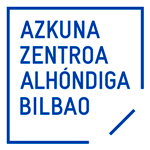
JAVIER VERDUGO
RESEARCHER
Sevilla, 1949. Archaeologist Curator of the Junta de Analucía Heritage. PhD by the University of Huelva (UHU). Graduate in Public Law and Graduate in Geography and History at the University of Seville (USE).
Member of the Spanish National Committee of ICOMOS. He has worked in the public sphere in the management and protection of the historic heritage of Andalusia and has held posts of responsibility, such as the Management of the Archaeological Sites of Italica (Seville) and was the coordinator of the Network of Cultural Spaces of Andalusia (RECA). He belongs to a Research Group “Vrbanitas. Archaeology and Heritage” of the Autonoma University of Madrid. In Italy he was awarded the grant of the Andalusian Institute of Historic Heritage in the Spanish Royal Academy in Rome in 1991.
Share:
The research work Archaeology and power. The protection and conservation of archaeological heritage in Rome from the Unification of Italy to the Dopo War (1870-1945) is the continuation of a previous study: IMMENSA AETERNITAS. The interest in the past and the training of the archaeological knowledge from Ancient times to the Modern Ages, with special attention on Rome and the Papal States. In the previously mentioned work, we studied the evolution of the protection of Roman heritage from 1162 to 1870 and the interventions from the Papal authority as well as the French administration after the occupation of Rome by Napoleon, whose main idea was for Rome to be the second capital of the Empire, after Paris. Even the French Revolution had already used the symbolism of the Roman Republic, just as Karl Marx rightly pointed out in El 18 Brumario de Luigi Bonaparte (The 18th Brumaire of Louis Bonaparte). In a certain sense, the idea of the renovatio imperii is a tradition rooted in Charlemagne, in the Holy Roman Empire and the Papacy that, since Silvestre and Constantino, is considered the heir to the glory of Rome, especially after the return from the captivity of Avignon. The idea of the Rome of the Caesars was linked to the Popes who maintain one of the titles of the emperors: Pontifex Maximus. With our work we are trying to continue the study of the archaeological heritage of Rome after the creation of the Italian state and the use of the remains of the past with a political agenda by fascism until 1943.
In so far as unification, three matters are to be studied. The role of the capital status that Rome produces in its urbanism, with the increase of population, the appearance of the super urban exploitation of Rome, the destruction of some villas such as that of Ludovisi and the recuperation of it all through historic heritage, in general, and through archaeology. In second place, the symbolic transformation of Rome. The new state wanted to emphasize the difference between the pontifical Rome and the New Rome, and for that end it looks for two ways, the first is the construction of monuments in honour of the Romans who fell between 1848 and 1870, together with Garibaldi or Cavour, and the second, a grand monument to Vittorio Emanuele II, that culminated in the construction of the controversial Vittoriano, inaugurated in 1912 on the occasion of the exhibition of 1911. In third place, the use of the myth of the Roman civilization on the subject of the Italian-Turkish war, with the aim of conquering Libya, that, to some, was considered a mission of the New Italy. Concerning fascism, special attention is given to the use of propaganda in the Roman era, with the use of fascism as an essential idea, as an ideology of the new regime, based on the concept developed by E. Gentile, who interprets fascism as a “manifestation of the sacralization of politics” subjected to rituals, liturgies, symbols, styles, mysticism, strongly evocative and persuasive. The main initiatives to do with the archaeological heritage of Rome will be analysed and evaluated with the results and effects of the aforementioned heritage. In particular, the creation of the Archaeological Park of the Via Appia or the opening of the Via dell’Impero or the Mar, the restoration of the Marcello theatre, the area of Largo Argentina, Campidoglio or the interventions of Campo Marzio: Ara Pacis and Mausoleo di Augusto, without forgetting the grand exhibitions such as the Bimilenario of Augusto or that of the architectonic projects full of Romanism such as the Foro Itálico or the Coliseum Place of EUR and the never completed Palazzo Littorio, close to the Coliseum.
The activity of the study takes place in specialized centres and of research in the city of Rome. Especially in the Museum of Rome, Photographic Archive Comunale, Library della Camera dei Deputati, Library Farnese nell’École française de Rome, Istituto Nazionale di Studi Romani, Archivio Storico Capitolino, Biblioteca di Archeologia e Storia dell’Arte, Central Archive dello Stato, Luce Institute, Scuola d’Architettura, amoung others. Special attention will be placed on the attention and the compilation of images and documentation for film and archives.
